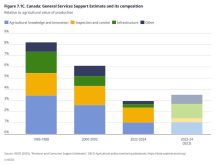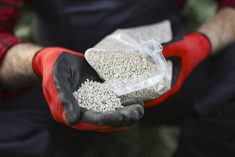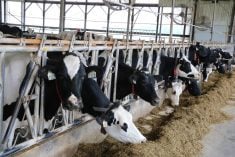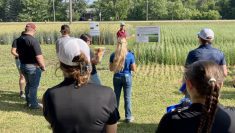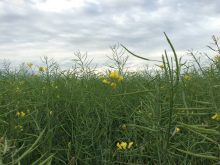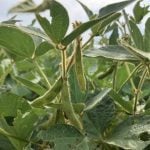Farmers still planning to apply fertilizer this fall have until midnight Nov. 9 to get the job done.
Otherwise, they must wait until next April 10 under new regulations that came into effect last spring.
Although the changes were announced several years ago, many farmers are oblivious, said Keystone Agricultural Producers (KAP) president Doug Chorney who only recently became aware of the regulations.
Chorney said meeting the restrictions will be a problem for many farmers.
I grow timothy grass seed and we often do fall fertilizing or early-spring fertilizing, Chorney said. Winter wheat is now a big crop for Manitoba farmers. Late applications in the fall before a snow event are a common practice. You re technically, legally not allowed to do that now.
Read Also

New ranking elevates Assiniboine College to national research elite
Brandon’s Assiniboine College is 47th in a national ranking measuring research dollars and output at publicly funded institutions in Canada.
The regulations are meant to prevent farmers from spreading fertilizer on frozen ground because when it thaws it s vulnerable to running off and polluting rivers and lakes, a spokesman for the Manitoba government s Water Stewardship department said in an email Oct. 28.
Farmers can apply for an exemption by contacting the department.
Given the favourable weather and that the deadline is still 12 days away, requests for exempt ions are not expected, the official said.
For the same reason, similar regulations apply to applying manure to fields.
While Manitoba farmers are gradually applying more of their fertilizer in spring, the majority of nitrogen is still applied in the fall, said John Herd, Manitoba Agriculture, Food and Rural Initiative s soil fertility specialist.
Herd said he suspects most farmers have already applied their fall fertilizer, although some might be waiting for rain to soften the dry, hard soil. There s an increased risk of losing anhydrous ammonia to the atmosphere when soils are dry and lumpy.
While farmers can legally apply nitrogen earlier in the fall, warm soil increases the risk that nitrogen will convert to nitrate making it vulnerable to leaching or denitrification.
Farmers also need to be aware there are regulations capping how much residual nitrogen they are allowed in their fields, Herd said. The restrictions of 30, 90 and 140 pounds an acre are in the case of land in Nutrient Management Zone N3, N2 and N1. The amount allowed is based on the productive capacity of the soil with the lowest residual for the least productive land.
KAP will spread the word about the ban on applying fertilizer between Nov. 10 and April 10 during its annual district meetings this fall, Chorney said.
You re taking a big risk going forward without getting special authorization, he said. This is a concern to me and I think this will affect a lot of producers.
Any crop producer or livestock producer needs to be sensitive to these regs and what they really mean for the day-to-day operation on your farms.
———
Late applications in the fall before a snow event are a common practice. You re technically, legally not allowed to do that now.
Doug Chorney



